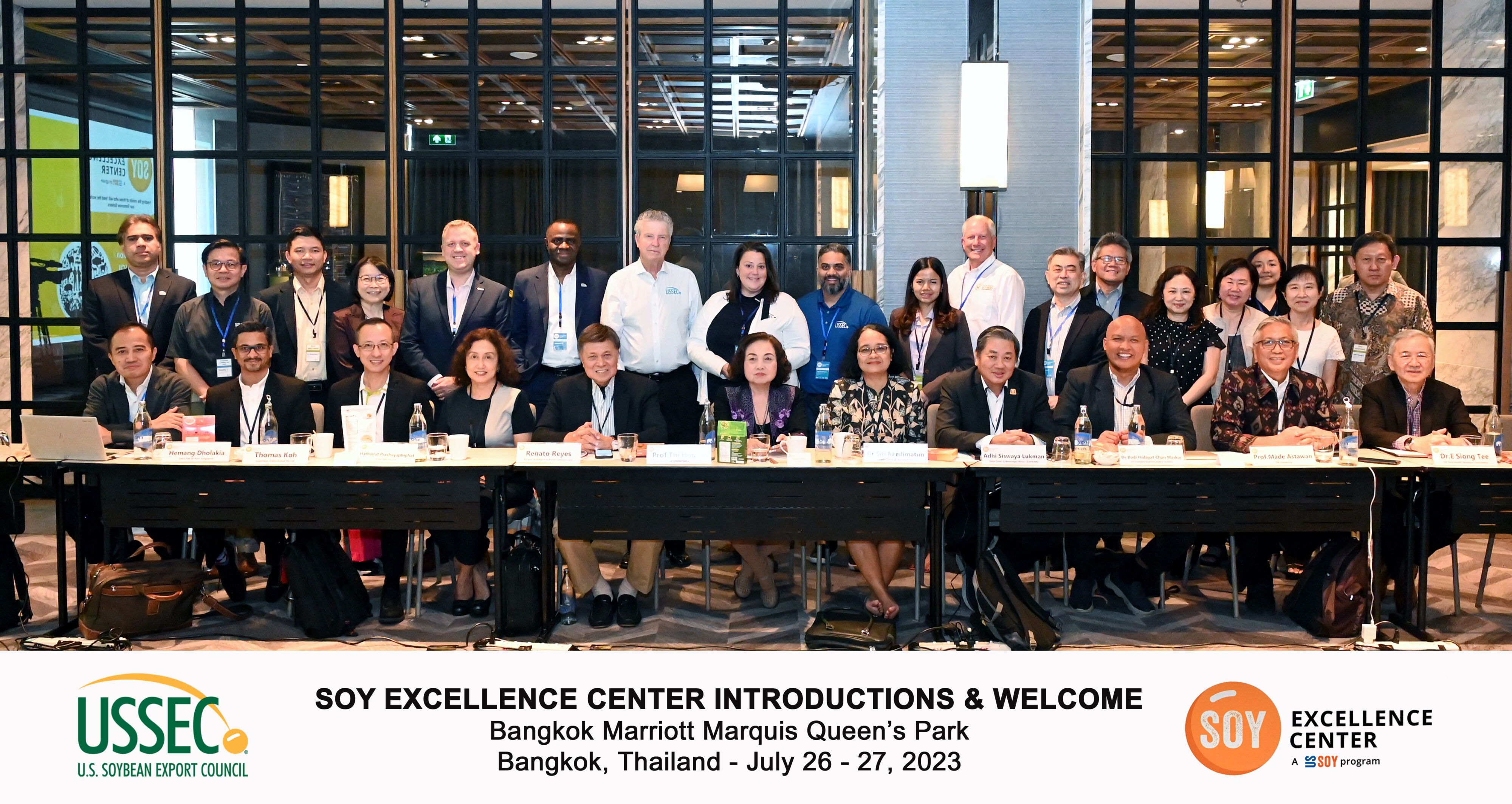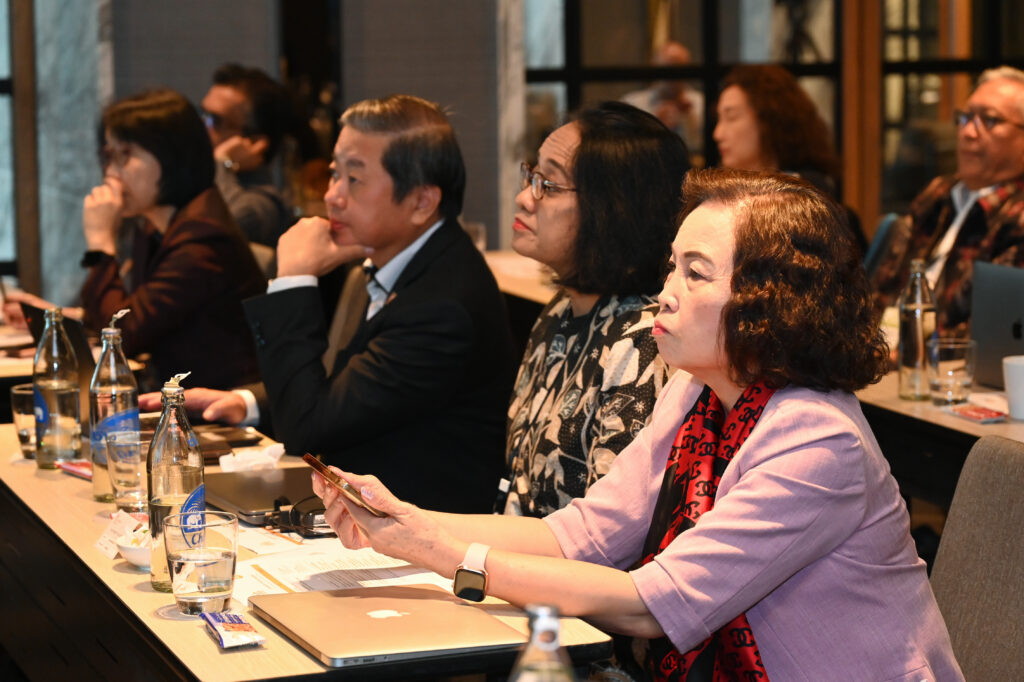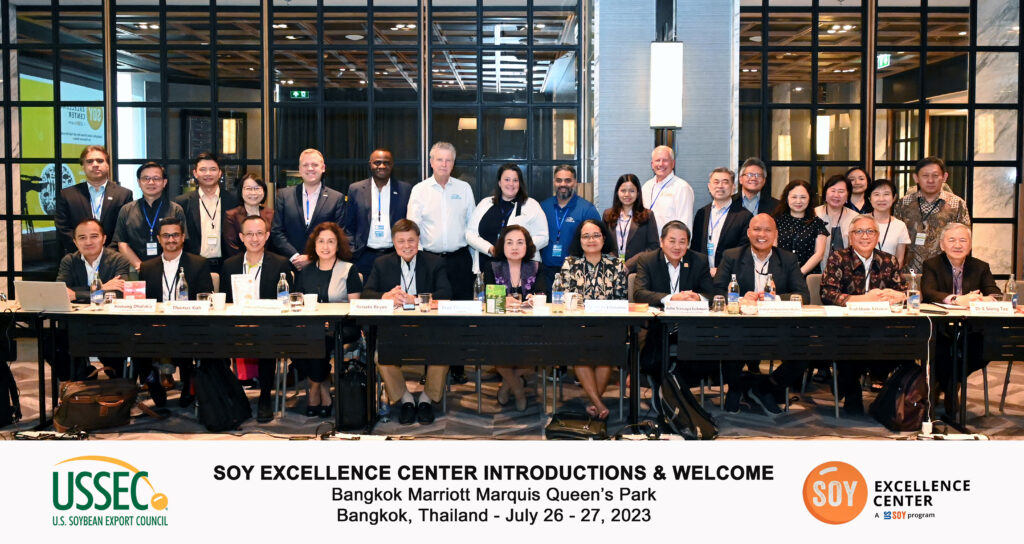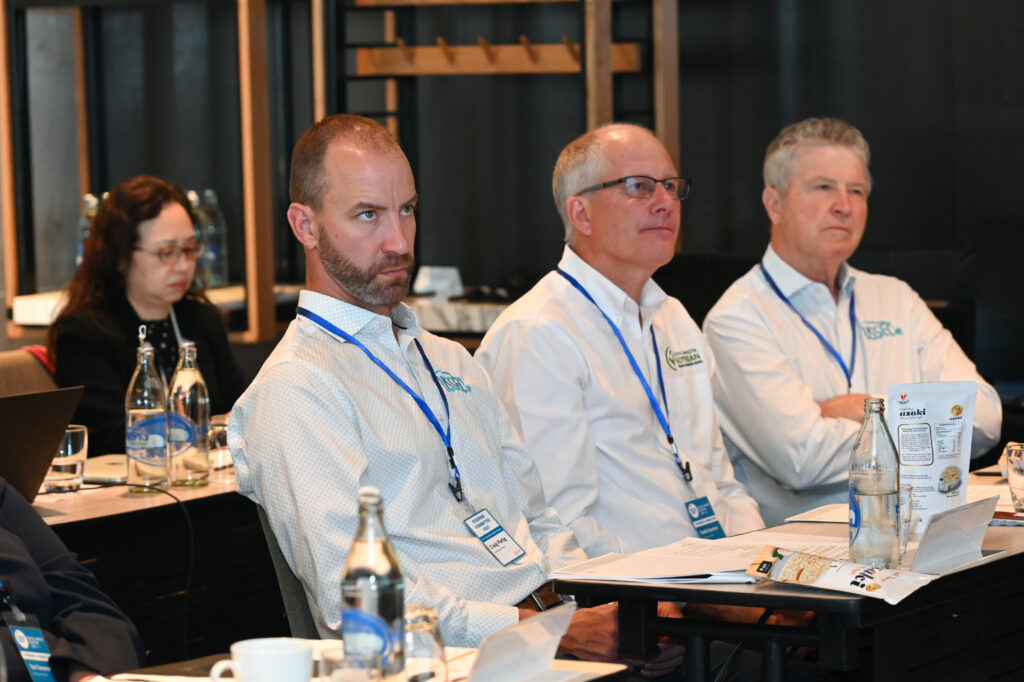SEC Asia Feeds Minds and Builds Skills in Thailand
- Category:
- Event followup

In 2021, ASEAN represented 23.5% of U.S. soybean meal exports due to the rising demand for animal feed that helps meet the region's food and nutrition security goals. There has been a noticeable upswing in poultry production in the region, with chicken increasingly becoming a preferred source of protein. This growth is attributed to urbanization, evolving dietary preferences, and improved living standards in Southeast Asia. Consequently, there's a need for increased production of animal feed.
The U.S. Soybean Export Council (USSEC) has always seen this potential for soy in this region. The Soy Excellence Center (SEC), an initiative by USSEC, recently held multiple events in Thailand in July. They sought to understand the challenges and opportunities within the soy value chain. The event series featured discussions with various stakeholders and specialized sessions such as the Soy Excellence Center (SEC) – Asia's Poultry Intermediate Course.
During the sessions, experts highlighted the SEC's initiatives, including its digital platform, hybrid training model, and evaluation metrics. Ms. Tori Sorensen, USSEC Board Director and Chairperson of the SEC, reiterated the goal of increasing access to knowledge and training in Asia through a digital community.
Attendees of these events included representatives from the SEC Steering Committee, Regional Advisory Council (RAC) members, U.S. Soy farmers, and expert speakers such as Hemang Dholakia Tetra Pak Asia, Dr. Jesper Clausen Royal De Heus Animal Nutrition, Matthew Clark FeedGuy, Prof Anadi Nitithamyong, Food Science and Technology Association of Thailand and Dr K. Teepalak Rangubhet Kasetsart University to name just a few. During the SEC Asia Poultry Intermediate Course, discussions revolved around crucial aspects of poultry production, from essential management to nutrition and biosecurity. Dr. Noel Lumbo from the University of the Philippines Los Banos highlighted the benefits of soybean in animal nutrition.
In related discussions, Dr. Michael David from the U.S. Soybean Export Council shared insights from SEC Nigeria that might benefit Asia. A South Asia RAC Meeting also introduced the SEC's goals and formalized appointments to the RAC.
A highlight was the Generative Thinking session, which facilitated a deeper understanding of the soy value chain. Jim Sutter, CEO of USSEC, participated virtually, encouraging participants to engage in constructive discussions and seek innovative and sustainable solutions. Participants discussed innovations in the soy and feed industries, such as using artificial intelligence for sustainable feed formulation and ingredient utilization, trends in plant-based protein foods consumption, and precision livestock farming. The speakers shared insights, including that more companies in the Asia region are looking at the circular economy model, and Soy is an excellent example of such a product. Also noted was that Thailand celebrates 'Tesagen Gin Jay' – the annual vegetarian food festival over ten days meant to cleanse the souls and minds of those observing it. Those present thought this would be an ideal time for driving greater awareness and emphasizing their 'Right to Protein' as 6.5 million people in Thailand still suffer from malnutrition and hunger, according to Food and Agriculture Organization estimates.
In conclusion, Timothy Loh, Regional Director, USSEC Southeast Asia, reflected on the broader impact of the work, emphasizing, "We are committed to building a sustainable and inclusive future. Our continued collaboration and learning to address food and nutritional security challenges are crucial to this intent. SEC Asia remains committed to supporting the learning programs that feed the minds and build the skills of those who will feed the world, our Tomorrow Solvers."



This story was partially funded by U.S. Soy farmers, their checkoff and the soy value chain.
#